Effective Stink Bug Control for Homeowners
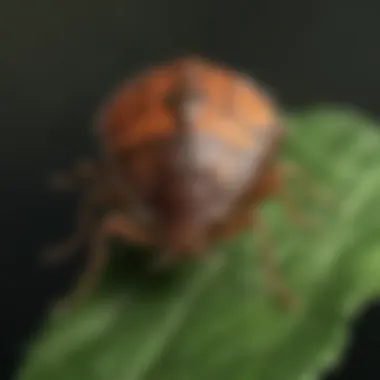
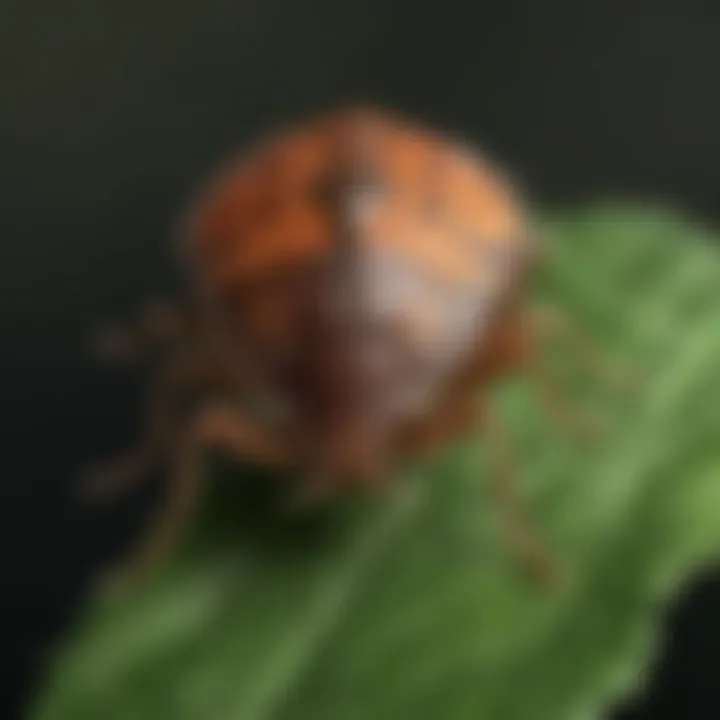
Overview of the Topic
Definition and Importance
Stink bugs are a noteworthy pest in residential areas. They are an invasive species, mainly the Brown Marmorated Stink Bug, and have gained significant attention in agriculture and home settings alike. Their distinct odor and ability to multiply quickly make them unwelcome guests. Effective stink bug control is crucial not just for individual homeowners but also for protecting crops and maintaining ecological balance.
Understanding their biology and behavior aids in the prevention of infestations. Homeowners and farmers must recognize the need for comprehensive management strategies that incorporate identification, prevention, and control.
Current Trends
With the rise in environmental awareness, there is an increasing shift toward eco-friendly pest control solutions. Homeowners now prefer organic treatments and preventive methods that minimize environmental impact. Collaborative efforts between agricultural experts and homeowners are also emerging, emphasizing knowledge sharing and experiences related to stink bug management.
Key Techniques and Practices
Step-by-Step Guide
- Identification: Knowing what stink bugs look like can help in early detection. They are typically shield-shaped and vary in color from brown to green. Their size generally ranges from 1 to 1.5 centimeters, and they have a distinctive odor when crushed.
- Preventive Measures: Sealing cracks and openings in the home is vital. Check windows, doors, and vents for gaps. Using screens on windows and doors aids in keeping them out.
- Management Techniques:
- Use traps. Homemade or commercial traps can be effective for reducing their numbers.
- Natural predators can also help. Birds, spiders, and some insects will consume stink bugs.
- Apply insecticides as a last resort, ensuring they are targeted and applied correctly.
Tools and Equipment Needed
- Sticky traps: To capture adult stink bugs.
- Sealing materials: Caulk or weather-stripping to close entry points.
- Insecticides: Consult a local expert for suitable products.
Challenges and Solutions
Common Obstacles
Homeowners often face obstacles such as
- Limited knowledge on effective stink bug control.
- Resistance to chemical treatments from the bugs themselves.
- Incomplete sealing of homes allowing re-infestation.
Innovative Solutions
In recent years, several solutions have come to the forefront:
- Biological Control: Introducing beneficial insects that prey on stink bugs has shown success.
- Smart Traps: New technologies, including light traps and monitored traps connected to mobile applications, provide real-time updates on stink bug activity.
- Community Outreach: Engaging with local agricultural extension services can keep homeowners informed about best practices.
Effective stink bug control requires a comprehensive approach that includes both prevention and ongoing management.
By grasping the dynamics of stink bugs and their impact, homeowners can better prepare themselves to tackle these pests with confidence.
Their understanding will thus assist in implementing effective strategies to safeguard their spaces.
Prelims to Stink Bugs
Stink bugs have become a prominent concern for homeowners, particularly in agricultural areas. Understanding these pests is essential for effective management and prevention strategies. This section introduces key aspects of stink bugs, such as their classification, unique characteristics, and behavior patterns.
Understanding Stink Bugs
Stink bugs, belonging to the family Pentatomidae, are notable for their distinct odor, which emanates from glands located on their bodies. This smell serves as a defense mechanism against predators. There are over 200 species of stink bugs, but the brown marmorated stink bug is perhaps the most recognized in residential settings. Their shape is typically shield-like and can vary in color from green to brown.
These pests are primarily known as agricultural nuisances, as they feed on various crops. Their piercing mouthparts enable them to suck sap from plants, which can lead to significant damage. The behavior of stink bugs changes with the seasons. They tend to invade homes during fall, seeking shelter from the cold. This seasonal migration highlights their resilience and adaptability, making them persistent household pests.
The Life Cycle of Stink Bugs
Understanding the life cycle of stink bugs can provide insight into their management. Stink bugs undergo a simple metamorphosis, which consists of four stages: egg, nymph, adult, and overwintering.
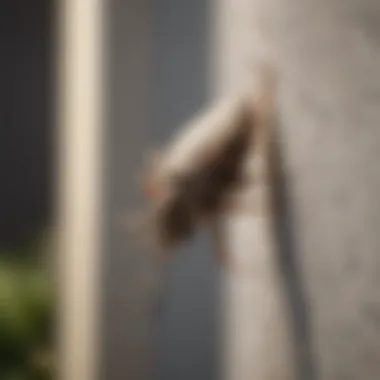
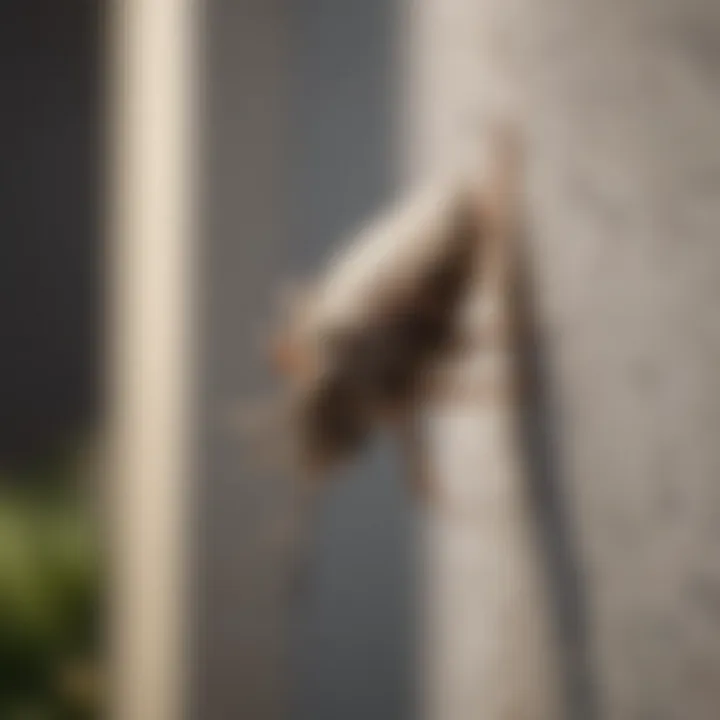
- Eggs: Females lay clusters of eggs, usually on the underside of leaves. Each cluster can contain up to 30 eggs.
- Nymphs: Upon hatching, nymphs resemble tiny versions of adults but lack fully developed wings. They go through several molts, growing larger each time.
- Adults: After completing the nymph stage, stink bugs become adults. They are capable of flight and can spread rapidly, contributing to the population in residential areas.
- Overwintering: As temperatures drop, adults seek shelter indoors or within leaf litter to survive the winter. In spring, they emerge to reproduce, continuing the cycle.
Understanding the life cycle is crucial for effective control methods. By targeting specific stages of growth, homeowners can significantly reduce infestations.
In summary, recognizing the behavior, characteristics, and life cycle of stink bugs is fundamental for proactive pest control. Homeowners who understand these elements can better implement strategies to mitigate their impact.
Identifying Stink Bugs
Identifying stink bugs is a crucial step in effective pest control within the home. Understanding the specific types of stink bugs that may invade a residence can significantly influence control measures. Accurate identification helps in knowing a bug’s habits and lifecycle, allowing homeowners to plan appropriate interventions. Furthermore, recognizing telltale signs of infestation can facilitate early action, effectively minimizing the drawbacks associated with a larger invasion.
Common Species Found in Homes
Several species of stink bugs are known to invade homes, but two are most prevalent. The Brown Marmorated Stink Bug and the Green Stink Bug are the primary culprits.
- Brown Marmorated Stink Bug: This species is easily recognizable due to its distinctive brown color and shield-like shape. They typically measure around 1 inch in length and have white bands on their antennae and a mottled appearance on their back.
- Green Stink Bug: As the name suggests, this bug has a bright green body. They are slightly smaller, usually up to 0.75 inches long. Their vibrant color makes them more noticeable.
Identifying these two species is essential. The Brown Marmorated Stink Bug can cause significant damage to crops, while the Green Stink Bug primarily affects fruit and vegetable plants.
Signs of Infestation
Being able to recognize signs of stink bug infestations is vital for timely intervention. Homeowners should look for:
- Visible Bugs: Spotting stink bugs actively moving within or around the home is an overt indication of infestation.
- Stinky Odor: Stink bugs emit a distinctive odor when threatened or crushed, which can fill a room if many are present.
- Damage to Plants: Monitor indoor plants for signs of distress, such as yellowing or wilting leaves, which can indicate feeding by stink bugs.
- Presence of Eggs: Look for clusters of tiny, light-colored eggs typically found on the underside of leaves, particularly in gardens or plants brought indoors.
This knowledge enables homeowners to act quickly when stink bugs are spotted. Ignoring early signs can lead to larger, more problematic infestations.
Ecological Impact of Stink Bugs
Understanding the ecological impact of stink bugs is vital for homeowners and farmers alike. While stink bugs may often be viewed merely as pests, they play an intricate role in the environment that can affect plant life, agricultural practices, and ultimately local ecosystems. Their presence can indicate certain ecological balances or imbalances, and ignoring this role can lead to misguided control efforts.
Role in the Ecosystem
Stink bugs primarily belong to the family Pentatomidae, and they serve as both herbivores and prey for various species. Herbivorous stink bugs feed on a wide variety of plants. These include crops, ornamental plants, and wild vegetation. The feeding habits of stink bugs can influence plant growth and biodiversity.
Moreover, stink bugs are significant in the food web. Many birds and insects rely on them for sustenance. For instance, the common garden spider benefits by preying on these bugs. Without stink bugs, the natural balance would be affected, leading to overpopulation of certain plants and shortages of others. This can produce cascading effects through the ecosystem.
It is important to note that not all stink bugs are harmful. Some species may actually contribute positively by controlling pests that threaten crops. Thus, understanding which species are present in specific areas becomes crucial for effective management rather than elimination.
Potential Risks to Home Gardens
The introduction of stink bugs can create substantial risks to home gardens, especially during growing seasons. Their piercing-sucking mouthparts can damage various plants, including tomatoes, peppers, and beans. The damage appears as white or brown spots on leaves, and in severe cases, it can lead to wilting and plant death.
Home gardeners should be aware of the following potential risks:
- Crop Damage: Stink bugs reduce the yield and quality of vegetables and fruits. Infestations can lead to significant financial loss.
- Spread of Diseases: These pests may introduce pathogens into plant tissues, leading to diseases that can spread beyond the initial plants. This is particularly true with heirloom varieties.
- Reduction of Biodiversity: Severe infestations can discourage a diversity of plant types in home gardens. This makes gardens less resilient to other pests.
To minimize these risks, homeowners should consider implementing comprehensive management strategies that allow for control without decimating the stink bug population. This approach fosters ecological balance and not just pest elimination.
Preventive Measures Against Stink Bugs
The importance of preventive measures against stink bugs cannot be overstated. Early intervention can save homeowners significant time, money, and frustration. Stink bugs are known for their capacity to invade homes, often in large numbers, especially during the fall. By adopting effective preventive strategies, residents can significantly reduce the likelihood of infestations and minimize the ecological impact that these pests can have on their gardens and living spaces. Key elements include addressing structural vulnerabilities, employing best landscaping practices, and utilizing natural repellents.
Sealing Entry Points
One of the most effective ways to prevent stink bugs from entering a home is to seal entry points. This is a crucial first step in any comprehensive pest management approach. Stink bugs are capable of squeezing through small cracks and gaps, so it is vital to conduct a thorough inspection of the home’s exterior.
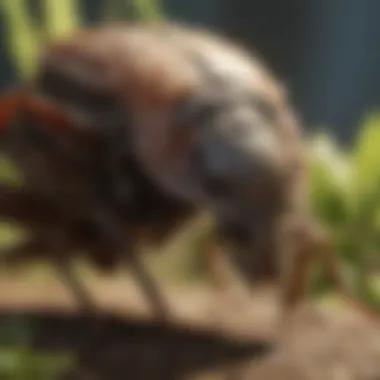
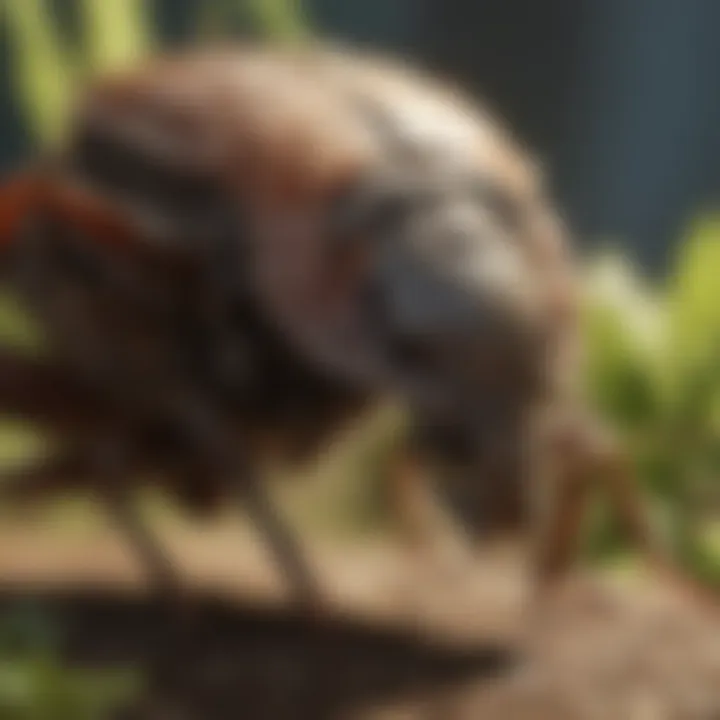
- Check windows and doors: Inspect for gaps around frames and use weatherstripping to seal any leaks. Window screens should also be in good condition without tears.
- Inspect siding and foundations: Look for cracks in the siding, foundation, and other areas that might provide entry. Use caulk or expanding foam to fill these gaps.
- Close vents: Ensure ventilation openings, such as those for attics or crawlspaces, are equipped with screens that are fine enough to prevent entry.
By systematically addressing these vulnerabilities, homeowners can develop a robust barrier that noticeably decreases the likelihood of stink bugs intruding.
Proper Landscaping Techniques
Landscaping also plays a pivotal role in stink bug prevention. Proper landscaping techniques can deter these pests while enhancing the overall aesthetic of the property. Here are some recommended practices:
- Maintain distance: Keep plants and shrubs at least two feet away from the home’s foundation. This creates a barrier that is less inviting for stink bugs.
- Choose plant varieties wisely: Opt for plants that are less attractive to stink bugs. For instance, avoid flowering plants that are particularly appealing to these pests.
- Manage debris: Regularly dispose of leaf litter and other organic materials. Stink bugs can use these areas for shelter.
Implementing these landscaping strategies creates a less hospitable environment for stink bugs and can contribute to the overall health of home gardens.
Utilizing Essential Oils and Other Repellents
Natural repellents can also play a role in prevention. Utilizing essential oils and other safe repellents is an eco-friendly way to deter stink bugs without toxic chemicals. Here are some effective options:
- Essential oils: Oils like peppermint, lavender, and tea tree are known for their repelling properties. Mixing a few drops of oil with water in a spray bottle can create an effective deterrent. Spray around doors, windows, and other potential entry points.
- Vinegar mixtures: A combination of vinegar and water also works well as a short-term repellent. This may require more frequent applications, especially after rain.
- Pest-specific sprays: Look for commercial sprays designed specifically for stink bugs. These often contain plant-based ingredients that are safe for use around humans and pets.
By integrating these repellents, homeowners can further enhance their preventive measures without resorting to harmful chemicals.
Control Methods for Stink Bugs
Controlling stink bugs in the home is vital for maintaining the quality of life and protecting property. This section discusses various control methods, highlighting the importance of an integrated approach. Homeowners need to understand that relying on a single method may not yield the desired results. A combination of methods tends to produce more effective outcomes. In this way, the benefits include reduced populations, minimized damage to property, and greater peace of mind.
Mechanical Control Strategies
Mechanical control methods involve physical actions to reduce stink bug populations. This can include manually removing them from surfaces or employing traps. Traps can be specifically designed to attract and capture stink bugs, often using light or pheromones for effectiveness. It's useful to place these traps near entry points or areas where stink bugs are most active.
In addition, sealing openings around windows, doors, and vents is crucial. Use caulk or other sealing materials to prevent these pests from entering. Screens on windows and doors can also significantly reduce the likelihood of stink bugs finding their way inside.
"An effective strategy often involves combination of physical removal and preventive measures to keep stink bugs at bay."
Chemical Control Options
Chemical control options can be effective, but they require careful consideration. Homeowners should explore insecticides specifically labeled for stink bugs. These products often contain active ingredients that target their life cycle effectively. It is essential to follow the application instructions diligently to ensure safety and efficacy.
Timing is also important when applying these chemical controls. Treatments are often more effective when stink bugs are in certain life stages, particularly during early spring when they emerge from overwintering sites. Additionally, applying treatments at entry points can minimize the chances of infestation indoors.
Biological Control Approaches
Biological control methods leverage natural predators to manage stink bug populations. Introducing beneficial insects, such as certain parasitoid wasps, can help suppress stink bug numbers. These wasps lay their eggs inside stink bug eggs, effectively reducing future populations.
Research and monitoring are crucial for determining when and how to implement biological controls. Gardeners should create environments conducive to beneficial insects, such as planting flowering plants that attract them. This method aligns with sustainable practices, supporting biodiversity while managing pests effectively.
Home Remedies for Stink Bug Control
Home remedies for stink bug control have gained significance in today's households. These methods appeal to individuals looking for sustainable and non-toxic solutions to manage stink bug infestations. Traditional pest control often involves chemical solutions that can be harmful to both humans and the environment. Home remedies offer a safer alternative that can be effective while minimizing negative consequences. Homeowners can take proactive steps to reduce stink bug populations without resorting to harsh chemicals.
Natural Mixtures and Sprays
Creating natural mixtures and sprays is a practical approach to deter stink bugs. One commonly suggested mixture involves using water and dish soap. A solution combining a few drops of dish soap with water in a spray bottle can disrupt the bug's outer protective layer, leading to dehydration. This method is simple and can be readily implemented. In addition, essential oils like peppermint or tea tree oil can be used by mixing with water in a spray form. These oils are known for their insect-repelling properties.
Some other effective ingredients include:
- Vinegar: Combining equal parts of water and vinegar creates a solution that can repel stink bugs if sprayed around entry points.
- Garlic: A garlic spray can be effective when the odor is strong. Mixing crushed garlic with water and letting it steep creates a natural repellent.
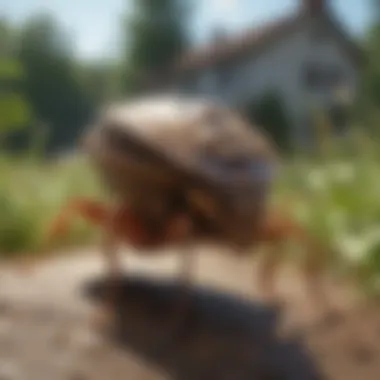
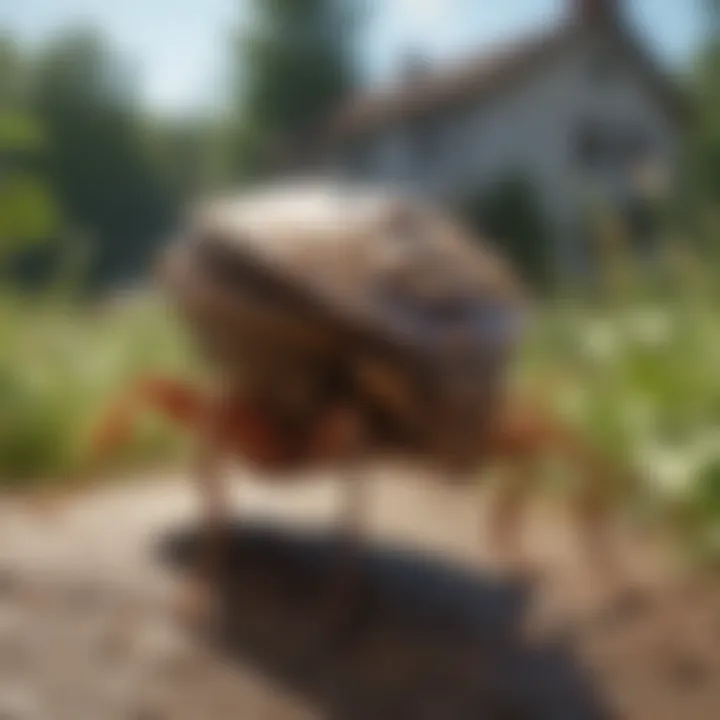
These mixtures are not only simple to prepare but also help in keeping home environments free from harmful chemicals.
Setting Traps
Another effective home remedy is setting traps. This method capitalizes on the stink bugs' attraction to light and warmth. One effective trap can be made from a simple household item like a bowl of soapy water. Positioning this bowl under a light source allows stink bugs to be drawn in. Once they land in the water, the soap will trap them, making it impossible for them to escape.
Here are a few tips for effective trapping:
- Location: Place traps near windows, doors, or any potential entry points where stink bugs are likely to invade.
- Frequency: Check and replace traps regularly to ensure they remain effective.
- Trapping Material: Utilize items like plastic containers with a small amount of soapy water or sticky tape traps available at home improvement stores.
Long-Term Management of Stink Bugs
Managing stink bugs may require ongoing effort. Long-term management focuses on solving not just immediate infestations but also preventing future occurrences. Homeowners must be proactive rather than reactive when it comes to controlling stink bugs. Each season brings the potential for new infestations, so a consistent, strategic approach is essential.
Effective long-term management includes various practices that work together to create an unfavorable environment for stink bugs, minimizing their presence in residential areas.
- Sustainability: Long-term strategies often prioritize eco-friendly methods. This reduces reliance on chemical pesticides, which can harm beneficial insects and lead to resistant pest populations.
- Education: Homeowners need to understand stink bug behavior and biology. Knowledge helps in identifying early signs of infestation and implementing preventive measures effectively.
- Community Efforts: Collaboration with neighbors can enhance results. Tracking and reporting sightings in a neighborhood can lead to collective actions against high infestation areas.
For pest management to be effective, combining multiple strategies is often more beneficial than relying on a single method.
By adopting these principles, homeowners can develop a comprehensive plan for managing stink bugs over time. This ensures that their homes remain less susceptible to these pests, ultimately preserving comfort and health in the living space.
Monitoring Infestations
Monitoring infestations is a critical aspect of long-term management. It involves regularly checking for signs of stink bugs in and around the home. Early detection helps implement timely control measures, significantly reducing the impact of an infestation before it escalates.
Several methods can be used for monitoring:
- Visual Inspections: Regular checks around windows, doors, and potential entry points can help catch stink bugs early. Look for their distinctive shape and odor, especially during the cooler months when they seek warmth.
- Trap Deployment: Using traps, such as adhesive or pheromone traps, can provide insight into population levels. These traps can be placed in strategic locations to monitor activity.
- Regular Reports: Keeping a log of sightings can help identify patterns and peak times when stink bugs are most prevalent. This information is invaluable in devising targeted strategies.
Monitoring should cover the exterior and interior of the home. On the outside, pay attention to gardens and landscaping, as these areas can attract stink bugs. By noting trends over time, you can adapt your strategies to anticipate potential infestations.
Integrating Pest Management Techniques
Integrating pest management techniques is essential for a successful long-term strategy against stink bugs. This approach combines various methods to create a systematic plan that targets multiple life stages and behaviors of stink bugs.
A few key components include:
- Cultural Control: This involves altering practices that attract stink bugs. For example, landscaping choices can make a difference. Selecting native plants and avoiding those that produce fruit can deter stink bugs from settling.
- Biological Control: Encouraging natural predators, such as certain wasps or birds, can help keep stink bug populations in check without harming the ecosystem.
- Mechanical Control: This includes physical means of control, like sealing entry points and using barriers to prevent stink bugs from entering the home. Guarding against pests through these methods can significantly reduce pest activity.
- Chemical Options: When needed, integrating careful applications of pesticides can assist in managing significant infestations. Always follow guidelines to minimize negative effects on beneficial insects.
Combining these techniques creates a holistic approach that adapts to changing conditions. A well-integrated pest management plan not only deals with current infestations but also positions homeowners better for future challenges.
Culmination
The control of stink bugs in residential areas is not just a matter of comfort, but a significant aspect of maintaining ecological balance and protecting home environments. Stink bugs, while often overlooked, can have profound effects on household gardens and the surrounding ecosystem. Therefore, understanding their behavior and biology presented throughout this article is crucial for effective management.
Summary of Best Practices
In summary, several best practices emerge for homeowners dealing with stink bugs. These include:
- Identifying stink bugs accurately to discern invasive species from beneficial ones.
- Preventing infestations by sealing entry points around windows and doors.
- Using both mechanical and chemical controls judiciously to ensure effective management without damaging the ecosystem.
- Employing natural remedies like essential oils or vinegar solutions as part of an integrated pest management strategy.
- Monitoring populations regularly to identify signs of infestations early.
By synthesizing these practices, homeowners are better equipped to handle stink bug problems effectively.
Encouraging Sustainable Practices
In our pursuit of effective control, promoting sustainable practices is paramount. Homeowners are encouraged to adopt measures that benefit not only their properties but also the environment.
- Plan your landscaping with pest deterrence in mind. This involves choosing plants that naturally repel stink bugs or do not attract them.
- Use non-toxic and organic methods for pest control to minimize harm to beneficial insects.
- Educate neighbors and communities about the importance of sustainable lawn and garden management to create a collective impact.
"Sustainability in pest management leads to healthier ecosystems and improved biodiversity."
By embracing sustainable practices, we can not only manage stink bugs but also foster an environment that supports resilience against future infestations. This balance between effective control and respect for nature is essential for long-term success in managing stink bugs.



